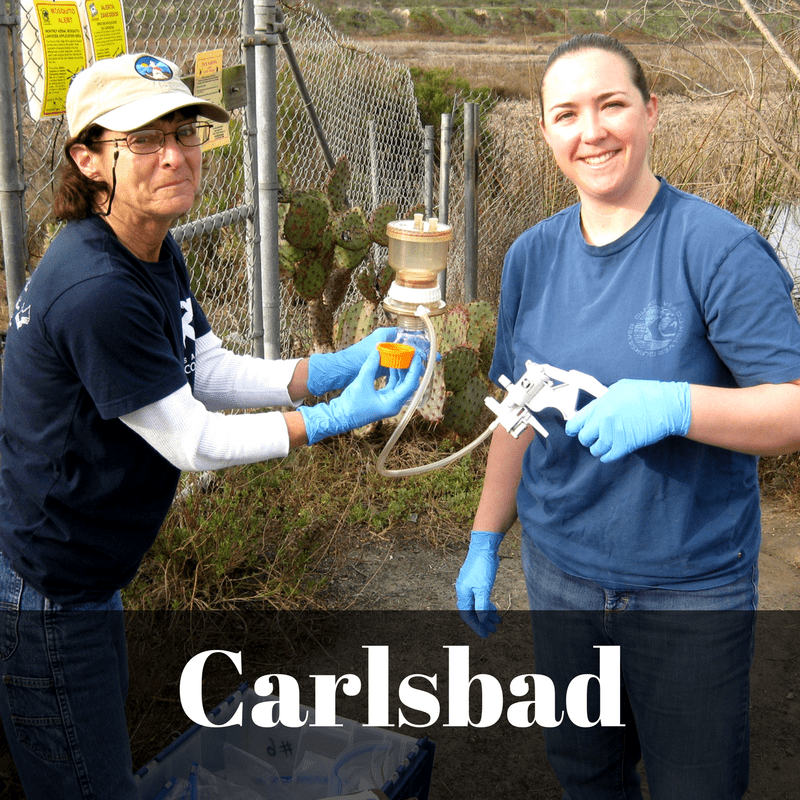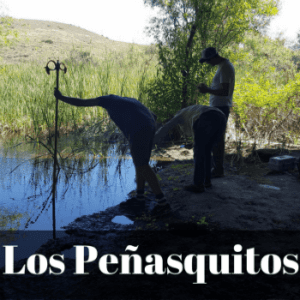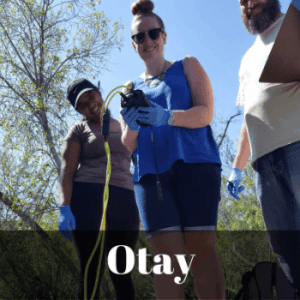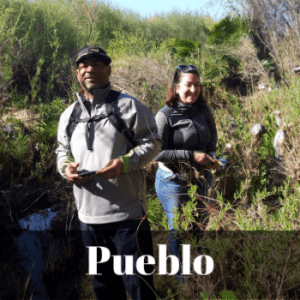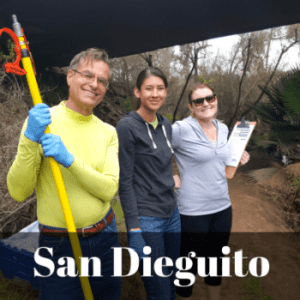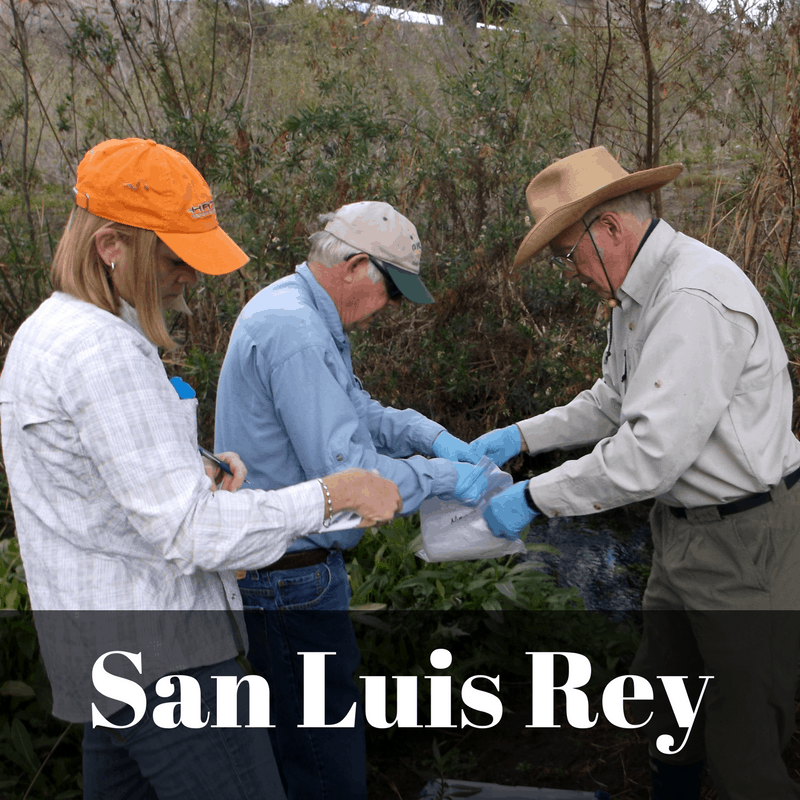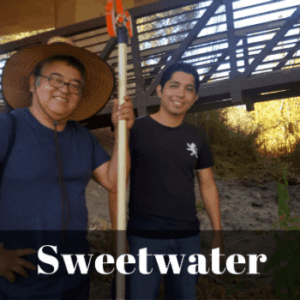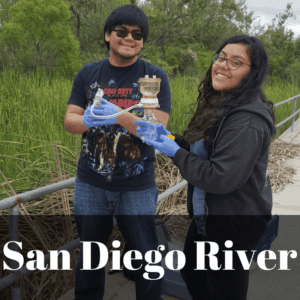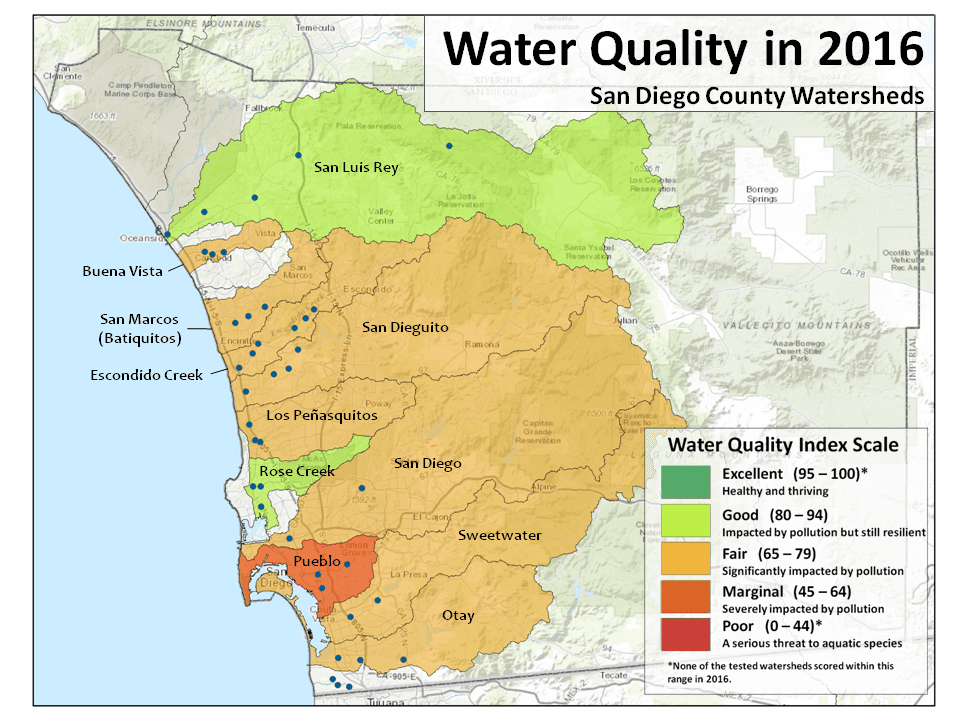
For the first time since 2013, some of our watersheds scored “Good” on the Water Quality Index and many of our watershed scores improved significantly from scores over the last few years, but we can’t get too excited. One year of improvement isn’t enough to say for sure that water quality is improving overall, and we still see lots of occasions where excessive pollution is impacting our inland waters.
This one-year snapshot highlights why our long-term water quality monitoring efforts are so important. By continuing to collect data over the long term, our program contributes to a better understanding of the impacts of factors such as climate, land-use changes and restoration efforts on water quality in our region.
The Volunteer Scientists That Made This Possible
In 2016, 152 volunteer Water Quality Monitors spent a collective 1,908 hours collecting and analyzing water samples from across San Diego County.
That work truly matters, making a difference that reverberates for generations. Our government doesn’t have the resources to keep as close an eye on our water as we do. Without San Diego Coastkeeper and the dedication of our Water Quality Monitors, the health of our inland waters would be even more of a mystery and even more difficult to manage and improve.
Our 2016 Water Quality Report, which we share with decision-makers across the region to inform better policy, wouldn’t exist without volunteers and donors like you.
- Find out how your neighborhood watershed scored in 2016 below
- Sign up to become a trained Water Quality Monitor
- Donate to fuel San Diego’s clean water movement
Why Did Our Water Improve For The First Time in Five Years?
Urban runoff continues to be the largest factor impacting people’s ability to safely fish and swim in San Diego County. Rain takes pollution from the surfaces of our streets into our storm drains, where it travels through to our rivers and streams and ultimately, to the Pacific Ocean. As a result, the overwhelming majority of San Diego’s waterways fail to the meet water quality standards that make them safe for recreation.
Though the cause of last year’s improved results can’t be directly identified, and we caution against giving too much credit to any one theory, we do have one idea about why water quality looked a little better in 2016.
Temporary water conservation regulations, implemented in response to the drought, may have helped water quality improve. When we prioritize our environment and water conservation over our front yard lawns, we reduce fertilizer use and fewer lawn sprinklers overflow onto our sidewalks. This may seem small when you think about a couple sprinklers, but San Diegan’s across the county stopped watering their lawns by the thousands. That meant less pollution washing from the street into our rivers and streams. It’s impossible to know for sure, but this one idea makes sense.
Click below to check your watershed’s report card.
Read the specific water quality scores for each of these tested watersheds below.













